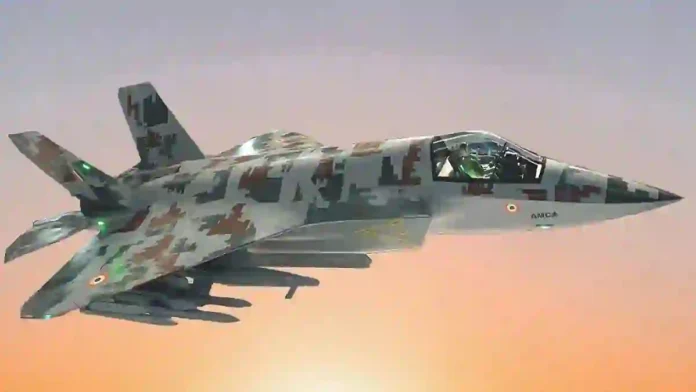The Defence Research and Development Organisation’s (DRDO) Aeronautical Development Agency (ADA) is set to issue an Expression of Interest (EoI) within the next few weeks to select a production partner for India’s 5.5-generation Advanced Medium Combat Aircraft (AMCA) program.
This move is a significant step in leveraging the capabilities of the emerging indigenous aerospace sector, aiming to involve both established and new players in the manufacturing and supply chain for this next-generation stealth fighter.
The AMCA project, recently cleared for execution by Defence Minister Rajnath Singh, marks a pivotal shift in India’s defence manufacturing approach. For the first time, private Indian companies will be able to compete alongside public sector giant Hindustan Aeronautics Limited (HAL) for a major fighter aircraft program.
Read- India’s Indigenous Artillery Ammunition Development: Rapidly Approaching Self-Reliance
Read- BrahMos-II Is Expected To Incorporate Design Cues And Technology From Russia’s 3M22 Zircon Hypersonic Missile
The EoI will be open exclusively to Indian firms, which may participate independently, form consortia, or enter joint ventures, including with global technology partners as equity stakeholders. This competitive, merit-based model replaces the earlier nomination-based system and is designed to accelerate development, reduce costs, and infuse advanced technology into the program.
HAL, traditionally the sole manufacturer of fighter jets for the Indian Air Force (IAF), has already received 24 responses from domestic companies interested in forming a consortium for the AMCA bid.
While HAL is expected to be the lead partner, equity stakes will be determined by the financial contributions of the selected private firms. ADA will oversee the selection process and lead the manufacturing of five initial prototypes, with further orders contingent on successful outcomes.




